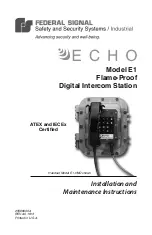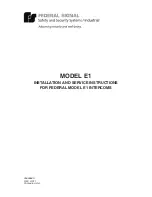
Precipitation Rate Gathering – Follow-Up Site Visit Process
Review the landscape conditions.
✓
Closely check the condition of the landscape. Look for stress in
the plant materials or other signs of under watering or over
watering such as soggy areas, puddles immediately after
irrigation, etc.
✓
Use a soil probe to check the depth of moist soil as evidence of
the depth the irrigation program is producing. This is very
important in areas showing signs of stress and areas where there
may be too much water. This information will help in defining
which of the following steps should be taken to fine-tune the
irrigation program.
✓
If the landscape is green with no signs of stress,
the schedule is
adjusted down 5% and monitored. If it is still green with no signs
of stress after 2 weeks, it is adjusted down 5% again. This process
continues every 2 weeks until the landscape shows signs of stress
and then the schedule is adjusted up 5% for a final adjustment.
✓
If the landscape is visibly wet
with extremely wet soil, puddles
and runoff, the initial adjustment may need to be adjusted 10%
or 15% down for the first 2 week adjustment period and then the
process follows the downward 5% adjustment every 2 weeks
until stress is noticed.
✓
If the landscape shows signs of stress
and very dry soil with the
base schedule, an initial adjustment up 5% is done. The
landscape is monitored every 2 weeks and adjustments of 5%
upward are programmed until the landscape shows no signs of
stress.
✓
If the landscape is extremely dry or extremely wet,
an
adjustment in the precipitation rate may need to be done. The
following steps will help you identify a proper precipitation rate
for your system.
Site Data Gathering
97
The Processes
Precipitation Rate Gathering - Initial Controller Installation Process
Review the System Installation
Make note of the following:
1.
A descriptive name for each active station on the controller.
2.
The manufacturer of the irrigation nozzles on each station.
3.
The spacing of heads for each station (general observation only).
4.
The pressure at the heads (general observation only, a
measurement may be required).
5.
For retrofit applications, the age of the irrigation system
components, especially the sprinkler nozzles and piping. These
items have a tendency for their performance to degrade over
time.
6.
All other station properties are gathered and entered on the Site
Data sheet and into the controller at this time.
Enter the Station Precipitation Rate in the Controller
1.
If the precipitation rate of the station is known from an irrigation
design or other calculation, enter it in the stations properties.
This is most common with new irrigation installations.
2.
If the precipitation rate is not known, such as a retrofit
installation, set the station SPRINKLER TYPE to the type of
heads that are installed on that station. The controller will set a
default precipitation rate for you.
Site Data Gathering
96






































